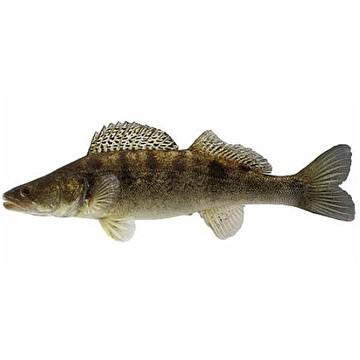Zander gutted 600/2000

SPECIES DESCRIPTION
The zander is considered one of the most valuable food fish, native to Europe. It is esteemed for its light, firm but tender meat with few bones and a delicate flavour. Although it is not generally bred for food, its adaptability makes zander fishery quite sustainable. Indeed, in some regions release of young zanders is restricted, as natural stocks already provide a sufficient supply for the market, while boosting the population of this large predator would have an adverse effect on the zander's food fishes. Zander is especially well suited for fish fillets, sushi and sashimi. It can also be served whole, baked, smoked or cooked. In some culinary circles, zander is appreciated even higher than salmon. Even the offals can be cooked into consommé.
In 2004, it was revealed that some restaurants in the Minneapolis-St. Paul area of Minnesota in the United States were serving imported zander instead of the closely related North American walleye (the state fish, and a popular food in the region). While zander and walleye are almost indistinguishable by taste, the restaurants were selling the European fish under the name "walleye", which is an illegal practice. An investigation by the U.S. Food and Drug Administration followed.
In Ohio many restaurants were caught using juvenile Zander fillets in the 40 to 80 gram range in place of Lake Erie Yellow Perch. Shortages on the availability of Perch along with skyrocketing prices caused wholesalers and restaurants to use the juvenile Zander also known as Pike Perch fillets.
In Poland, this fish is popular and regarded as a delicacy, but the difficulty in catching it makes it expensive. It is most commonly baked with a trace of butter.
In Finland, as a conservation measure, law regulates the minimum size of zander considered mature enough to be eaten. Zander is popular for its taste and its tendency to be picky with its prey, making it harder to catch than many other fish. Zander also tend to chase their prey before striking. When striking a fishing lure, it fights by pulling backwards, giving the impression that there is a big stone attached to the fishing line. Because zander is not as good in striking as pike, it prefers slower, even wounded fish; a lure moving too fast won't get the zander's attention. On the other hand, anecdotal evidence suggests that zander do not attack lures that are moving too slowly either.
Wikinews has related news: 'Monster' fish killed in Swiss lake after biting swimmers
In July 2009 in Switzerland, a zander attacked tourists in Lake Maggiore, sending two people to the emergency room; the worst cut inflicted was about 10 centimeters long. The 70-cm 8-kg fish was later caught by the local police who cooked it and offered it to the tourists for the trouble it caused. It is very unusual for zander to attack humans.
